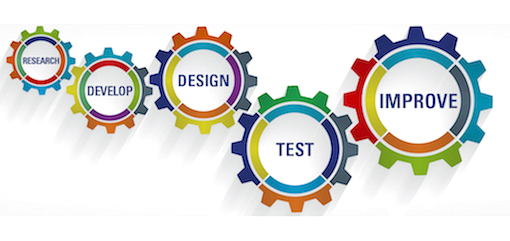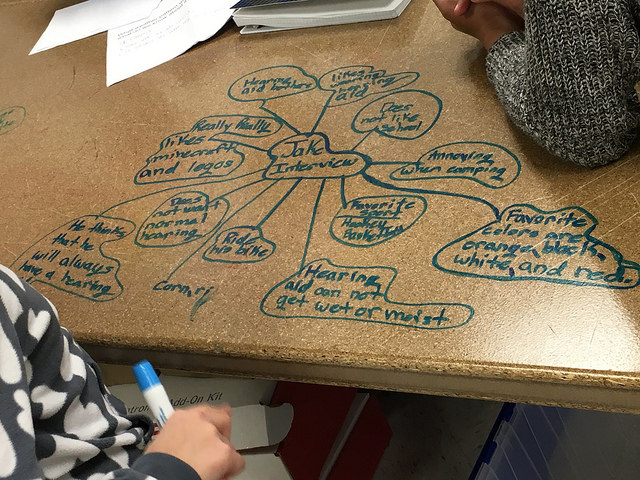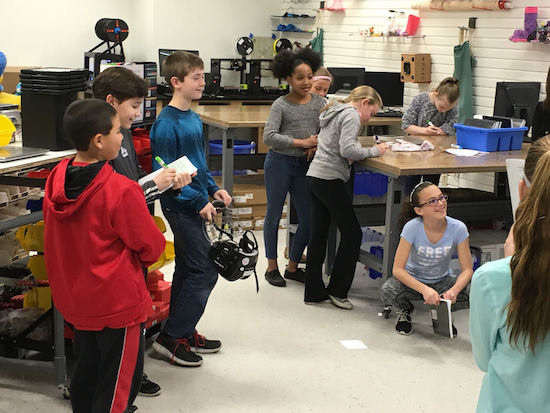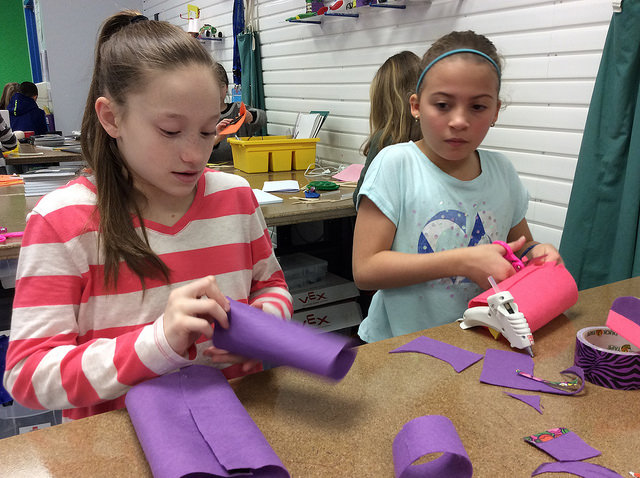Tips & Tools for Writing Good STEM Lessons
I guess I enjoyed STEM because it was fun and exciting. Because you got to do it over and over until you got it right.” — 6th grade student, Burns Middle School (Mobile, AL)
Isn’t that what we all want from our lesson planning? For students to say the lessons were fun and exciting? And for our own assessment to show that the lesson was solid in the execution – and good enough to make even better?
I devote a long chapter in my new book STEM by Design (Chapter 8) to “Designing a STEM Lesson.” I begin with pre-planning, including searching for appropriate lesson ideas, and walk readers through outlining, developing a front-matter list, and then to the actual writing of a lesson and assessing its effectiveness.
I don’t have the space here to present all of that helpful detail, but I can share the essential components of the lesson writing process and some of the tools I developed for the book. You can download them free in this article. If you find this material helpful, you may also want to explore my book website and look at other free excerpts and resources.
Let’s take a first stab at designing a STEM lesson. To clarify—I’m describing a process for a fully developed lesson here. However, many teachers operate from a lesson outline and test their procedures before actually writing a more detailed version. I like to do that as well. It allows me to make changes and to capture new understandings and insights before I design the completed lesson.
STEM Lesson Procedures
At this point I use the steps of the engineering design process (EDP) to guide my thinking and my writing. I don’t necessarily use EDP steps verbatim as headings in the lesson.
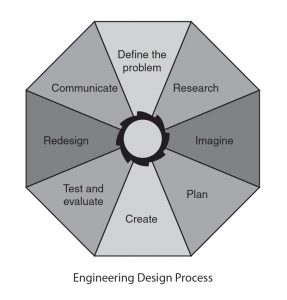
I’ve also created a tool, Design Tool 8.2: Lesson Design Checklist, which includes major points from this article and other tips. You may find this handy as a quick reference.
I always display a poster of the engineering design process or give teams a handout with the EDP graphic on it. From time to time I ask them to glance at the graphic and identify where they are in the process.
Keep the students focused on the idea that they are following a process for solving problems, and that following a problem-solving process can lead to good results in other areas of their life as well.
I go over each step in the EDP wheel in Chapter 7. In this step-by-step guide to writing a STEM lesson, I’ll make some references to it but won’t dig deep.
Writing the Lesson
- Clearly Define the Disciplinary Knowledge Students Need for this Challenge
Gain the cooperation of other content-area teachers as needed in making sure needed concepts are taught.
- Introduce Students to Their Engineering Challenge by Engaging Them Fully with the Problem
Note that the greatest amount of student engagement generally occurs when they are the ones who identify the problem that needs to be solved. In any case, grab their interest with an engaging scenario—perhaps through a video, a field trip, or an interview with someone who has knowledge or experience with the problem.
You might invite one or more engineers who enjoy working with students to talk with them about the challenge on which your lesson focuses. For a lesson that involves designing an assistive device, I would try to find someone who uses such a device and ask him or her to talk with my students, laying out the need and thanking the students for being interested in designing prototypes for such devices.
Skype, Google Hangouts, and other social media can bring experts up close and personal for interaction with students. Information your students gain through these introductory activities can also help them gather information for the research step of the EDP and help them imagine solutions.
- Describe the Role of the Teacher in the Lesson
As you write your lesson, think of a colleague (or your later self) reading the results. Let your procedures define the role of the teacher in the STEM lesson. You might include open-ended questions for students to mull over. Mention walking around the room and listening as the students discuss, figure out things, and work together.
Reinforce the idea (to yourself and future readers) that your role as the teacher is to provide students with support and guidance without doing the thinking for them. Point out ways you might facilitate when teamwork breaks down.
You might be able to guide students toward a solution by helping them ask good questions to keep themselves focused. Offer hints to help others who may use your lesson see that their role is to guide team members toward insights and solutions without being overly directive.
- Write Teamwork Suggestions Directly into Your Lesson
Do the students you teach know how to be productive team members? Your ultimate goal is to help team members learn to regulate their own behaviors. Rather than trying to introduce teamwork skills all at once, choose a particular teamwork skill to focus on in each lesson you design. Decide how you will help them judge their success with that skill. Also organize the student teams prior to the day the lesson begins so students will arrive at class ready to get down to work.
- Make the Math and Science Content Connections Explicit in Your Lesson
Don’t take for granted that students will realize math and science are working together to solve a problem, no matter how obvious this may seem. They’ve been thinking of these as unconnected subjects for most of their school life.
Be explicit about the times and the ways that science and math are being used together to solve the problem. Interconnections help them to see the project as a cohesive whole and can actually change their approach to solving that problem.
- Give Technology a Clear Role in Your Lesson
Many times students think of technology as something totally apart from science and math. In your lesson writing, build the idea that a technology is something created to solve a problem or meet a need. Math and science are always a part of creating technology. Students actually construct a technology when they build a device to solve an engineering challenge.
Work with your tech teacher to give digital technology an authentic role in lessons when possible, whether for researching the problem, presenting a scenario to introduce the challenge, connecting with experts to get information and ask questions, communicating about their lesson, or using technology skills, such as coding, in a way that helps with the challenge.
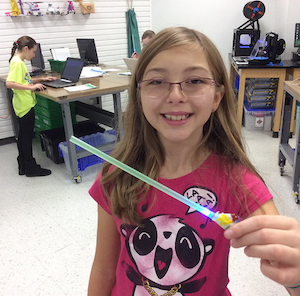
For ideas to help with coding check out this great resource from Vicki Davis at Edutopia: 15+ Ways of Teaching Every Student to Code (Even Without a Computer).
- Make Authentic Connections with Other Subjects Where Appropriate
The focus of a STEM lesson is always on the core STEM subjects. However, connections with other subjects are often natural and appropriate and worthy of inclusion in your lesson plan.
In your school, perhaps other content area teachers have agreed to focus on this same STEM challenge. If the language arts teacher is helping students with technical writing skills, make that language arts connection explicit when students are writing about their design procedures or reporting on results.
The art teacher may help students develop sketches of a device, or use other visual tools to communicate their results to audiences. Art can also help students make their devices attractive and marketable. If they have speech or drama classes, that teacher could help them work on principles of effective oral presentations to help with the “communicate” step.
The more students understand that the subjects they learn in school are connected with one another in the real world, the more valuable their learning will be to them. (If you are in a self-contained classroom, then this suggestion is a shoo-in.)
- Consider Student Diversity as You Design Your Lesson
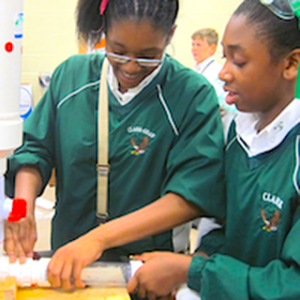
In middle school many girls lose interest in STEM. The lack of gender and ethnic diversity in STEM careers presents significant challenges for our nation. Make sure all of your students have a real role in solving STEM challenges and give all students opportunities to engage with each other as competent and contributing team members.
- Assess Your Lesson
As you lead your STEM lesson in class, ask yourself frequently, “How’s the lesson going? Are students responding? Where do I need to make changes?” In fact, plan to ask your students those questions!
Design Tool 8.5: Lesson Impact on Students can help you make decisions about improving the lesson you designed. Also use Design Tool 5.1: STEM Lesson Specifications to see what STEM components you included and which you need to focus on for the next lesson you design. And feel free to explore all the tools I developed for STEM by Design at this free download page on the book website.
SOME KEY TOOLS RELATED TO THIS POST:
Design Tool 5.1: STEM Lesson Specifications
Design Tool 7.3: EDP Description for Teachers
Design Tool 7.4: Sketch-a-Lesson EDP Template
Design Tool 8.1: STEM Lesson Front Matter List
Design Tool 8.2: Lesson Design Checklist
Design Tool 8.5: Lesson Impact on Students
Classroom images: Kevin Jarrett, Flickr CC
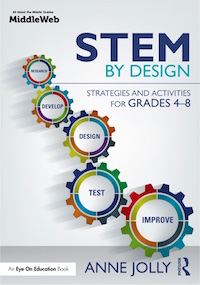
Order Anne’s new book STEM by Design: Strategies and Activities for Grades 4-8 from the publisher and receive a 20% discount (code IRK95).


